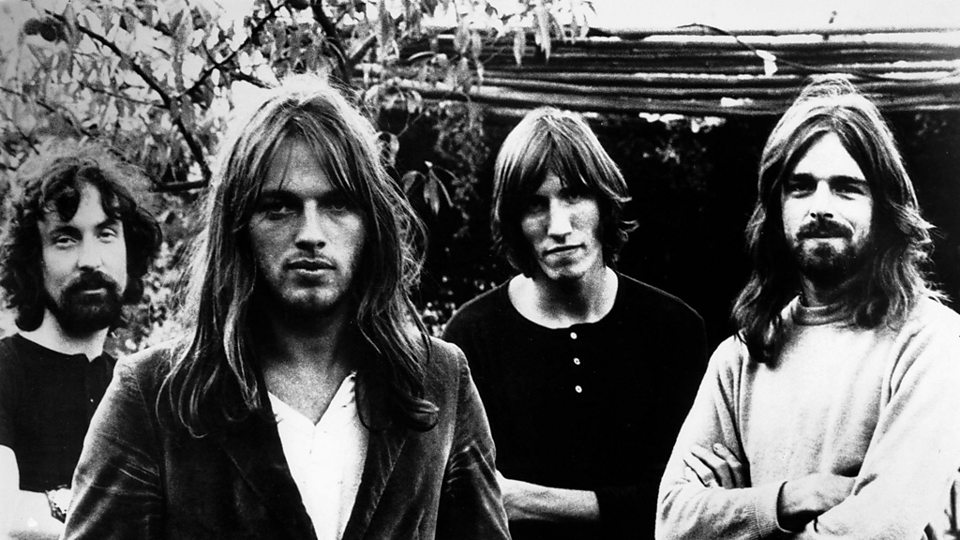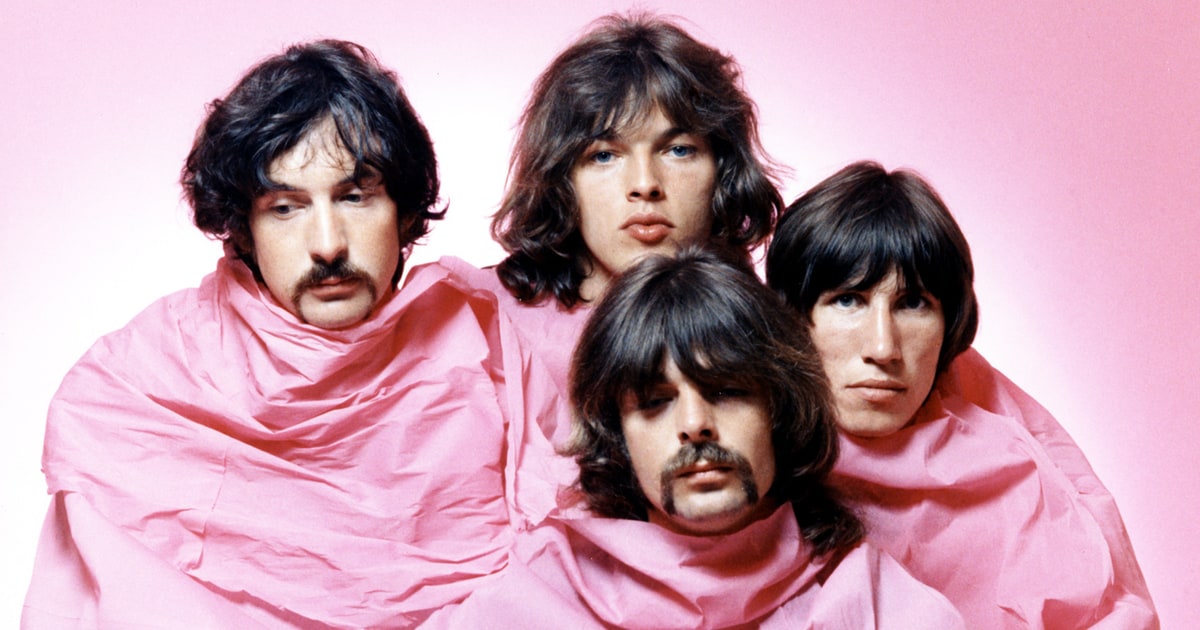 Most
music historians, journalists, critics and lovers alike cite 1976 as
the best year for mainstream music. However three years earlier saw
the release of the decade’s most pivotal, groundbreaking and
successful album and for over 40 years, The Dark Side of The Moon
has been the crowning achievement of the concept album. Broken down
into statistics and numbers alone in regards to success, Pink Floyd’s
eighth studio album is an incredible achievement. After topping the
Billboard Top LPs and Tapes chart, it subsequently remained in the
charts for an extraordinary 741 weeks from 1973 to 1988 and as of
today, it is estimated to have sold 50 million copies worldwide,
making it the second most successful album after Michael Jackson’s
Thriller. It has twice been remastered and re-released, been
covered in it’s entirety by an assortment of other bands and acts
and is frequently ranked as the greatest album of all time.
Most
music historians, journalists, critics and lovers alike cite 1976 as
the best year for mainstream music. However three years earlier saw
the release of the decade’s most pivotal, groundbreaking and
successful album and for over 40 years, The Dark Side of The Moon
has been the crowning achievement of the concept album. Broken down
into statistics and numbers alone in regards to success, Pink Floyd’s
eighth studio album is an incredible achievement. After topping the
Billboard Top LPs and Tapes chart, it subsequently remained in the
charts for an extraordinary 741 weeks from 1973 to 1988 and as of
today, it is estimated to have sold 50 million copies worldwide,
making it the second most successful album after Michael Jackson’s
Thriller. It has twice been remastered and re-released, been
covered in it’s entirety by an assortment of other bands and acts
and is frequently ranked as the greatest album of all time. Statistics
and numbers aside, what made Dark Side of The Moon so good and
how did it endorse Pink Floyd to become one of Britain’s most
endearing and successful rock bands of all time? To begin with, Floyd
were already seasoned recording artists with seven albums to their
name within five years and were already distinguished
by their use of philosophical lyrics, sonic experimentation and
complex live
performances. Having emerged from the London underground in 1967 and
under the creative leadership of founder Syd Barrett, Pink Floyd
stood out from other acts such as Led Zeppelin, The Kinks and The
Rolling Stones with an excessive take on progressive, experimental
and psychedelic rock and a love of extended instrumental expeditions.
However when Barrett departed in 1969 due to a mental collapse aided
by excessive drug use, Pink Floyd struggled to re-establish
their artistic footing and lost major ground on other popular acts of
the time. However that all changed when in mid 1972, Floyd teamed up
with engineer Alan Parsons at Abby Road Studios to create the album
that would transform the band from a cult act into a global
phenomenon.
Statistics
and numbers aside, what made Dark Side of The Moon so good and
how did it endorse Pink Floyd to become one of Britain’s most
endearing and successful rock bands of all time? To begin with, Floyd
were already seasoned recording artists with seven albums to their
name within five years and were already distinguished
by their use of philosophical lyrics, sonic experimentation and
complex live
performances. Having emerged from the London underground in 1967 and
under the creative leadership of founder Syd Barrett, Pink Floyd
stood out from other acts such as Led Zeppelin, The Kinks and The
Rolling Stones with an excessive take on progressive, experimental
and psychedelic rock and a love of extended instrumental expeditions.
However when Barrett departed in 1969 due to a mental collapse aided
by excessive drug use, Pink Floyd struggled to re-establish
their artistic footing and lost major ground on other popular acts of
the time. However that all changed when in mid 1972, Floyd teamed up
with engineer Alan Parsons at Abby Road Studios to create the album
that would transform the band from a cult act into a global
phenomenon. Dark
Side of The Moon fully
showcased a band that had finally defined itself creatively and
musically. Previous Floyd albums such as 1970’s Atom
Heart Mother and the
following year’s Meddle
suffered greatly from filler, throwaway songs and enthusiastic
compositions depleted by poor production. The Beatles will lay claim
that they produced the first ‘concept’ album with Sgt
Pepper (and Rolling
Stone will back that claim to eternity) but unfortunately for the Fab
Four, their efforts don’t come anywhere near close to Floyd’s
with a greater exercise in musical and lyrical content and the sheer
scale and reach of the cerebral nature that Dark
Side of The Moon excels
in. After all ten tracks and 42.59 minutes of running time, the album
shows no weakness, no fillers, no shoddy production, just music that
disseminates a record with textual and conceptual richness,
demanding the listener’s involvement in their philosophical
and abstract world. From start to finish, you can’t separate
any track from the album due to them being so inextricably bound
together into a seamless music experience.
Dark
Side of The Moon fully
showcased a band that had finally defined itself creatively and
musically. Previous Floyd albums such as 1970’s Atom
Heart Mother and the
following year’s Meddle
suffered greatly from filler, throwaway songs and enthusiastic
compositions depleted by poor production. The Beatles will lay claim
that they produced the first ‘concept’ album with Sgt
Pepper (and Rolling
Stone will back that claim to eternity) but unfortunately for the Fab
Four, their efforts don’t come anywhere near close to Floyd’s
with a greater exercise in musical and lyrical content and the sheer
scale and reach of the cerebral nature that Dark
Side of The Moon excels
in. After all ten tracks and 42.59 minutes of running time, the album
shows no weakness, no fillers, no shoddy production, just music that
disseminates a record with textual and conceptual richness,
demanding the listener’s involvement in their philosophical
and abstract world. From start to finish, you can’t separate
any track from the album due to them being so inextricably bound
together into a seamless music experience.
It’s
intriguing to note that Dark
Side of The Moon is
sometimes considered a quintessential psychedelic album because in
many ways, it’s really the contradictory of psychedelic music. It’s
not that the production isn’t elaborate (and this was exemplary use
of studio effects and production for its time) or the music isn’t
extended into lengthy labyrinthine passages. It’s that the overall
mood is so unrelentingly sullen.
Encompassing and combining themes and emotions including greed
and insanity as well passionately exploring the nature of human
experience, the album shows that if
psychedelia means anything, it’s that the music has always
represented a way for listeners to embark on a mind-expanding journey
of self-discovery. With Dark
Side of The Moon, that’s
simply not possible. The record more or less tells the listener what
to think and what to feel. It’s devoid of anything that could be
considered uplifting or invigorating, but audiences everywhere fell
for it’s nefarious charm and have done since.
By 1973, Roger Waters, whom had replaced Barrett as Floyd’s
frontman had entered the beginning of his bleakest and most austere
phase as a lyricist and was responsible for most of the lyrics on the
album. Though gloomy, this was Poetry in motion from Waters and
throughout Dark Side
he excelled in his dark pastures. The satire of excess and greed in
Money
is biting and derisive, but it is in no way mind-expanding. There are
also many references to Barrett’s dissolution throughout the
album, most notably on Brain
Damage, a song about
mental illness that’s so bleak; it will surely inspire listeners to
doleful reverie rather than romantic idealism. Breathe
with the lyrics, "All
you touch and all you see is all your life will ever be," and
Time, a cry of the pressures
of life slipping by without people realising, also conveys this great
understanding of the difficulties of their former leader and that
their then modern life was leading to madness.
Dark
Side of the Moon, even
after 40 years, remains
an essential album. It’s not their most endeavouring effort or even
their most easily accessible; The
Wall gets
that nod as a complex double album that’s burdened with pop
hooks. It’s
not their heaviest attempt, the 1977 Animals holds
that characteristic. Nor even is its Pink Floyd’s most dulcet
album, Wish You Were
Here is
much more evocative in that regard. Dark
Side The of Moon,
however, is the album where Pink Floyd became the band they needed to
be and what the 70’s needed them to be. Fully progressing from
previous decade reminders grappling with their drug induced issues
and figuring out how to write songs and record them. It’s a
redefinition as consequential as any in the history of music, and
deservedly became the second biggest album in recording history. It’s
rare when one album documents artists expressing so well their
creative stride and it’s even rarer when that album becomes one of
the most influential and best selling in music history, given that it
is a fully fledged concept album makes it even more remarkable. It
remains an essential part of any music collection—no matter what
decade you were born in. If you don’t believe me just ask; Tool,
Dreamthreater, Queensrÿche,
Rush, A Perfect Circle and Radiohead and the thousands of other bands
to have been influenced by Floyd’s 1973 masterpiece.

No comments:
Post a Comment